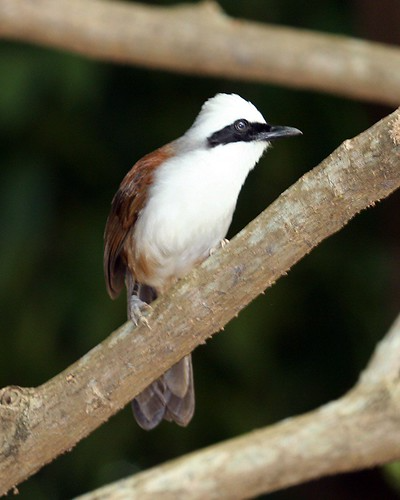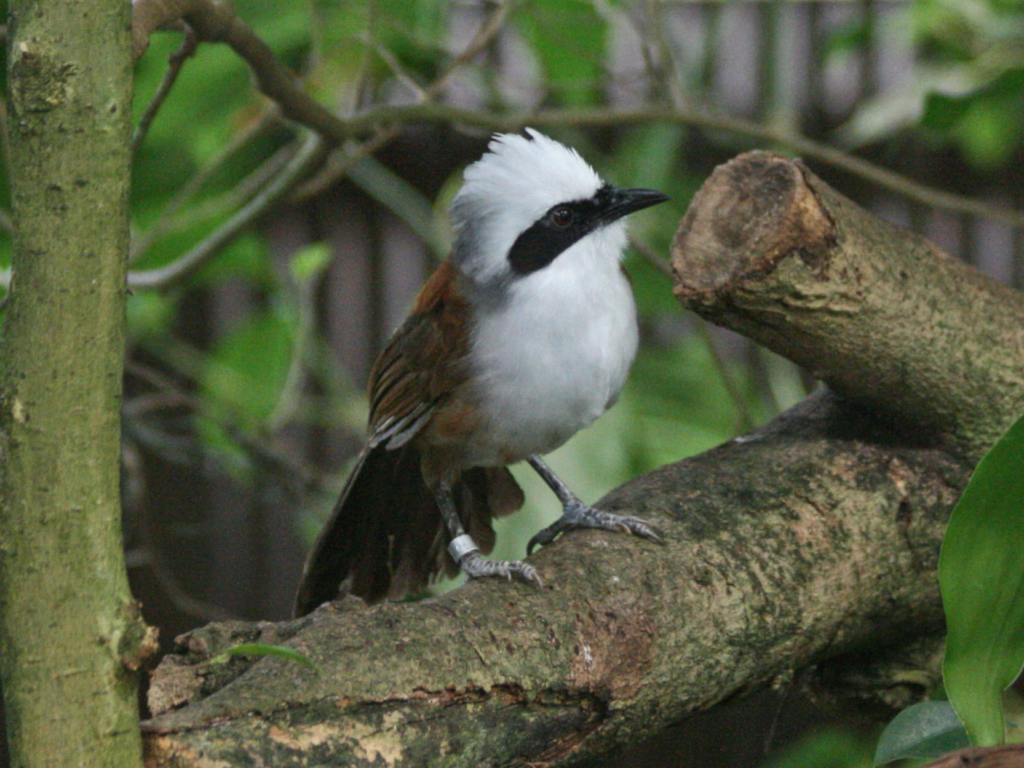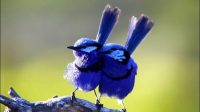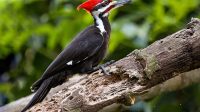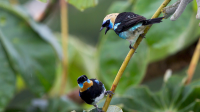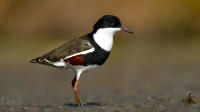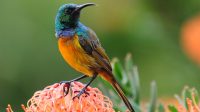His prominent white peaked crest, when combined with a thin dark mask, creates a striking visual contrast.
Meet the White-crested Laughingthrush
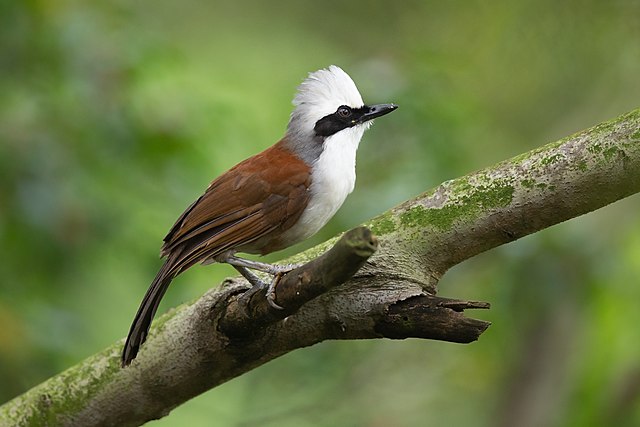
Photo courtesy if JJ Harrison (https://tiny.jjharrison.com.au/t/RcCZoHJq1ew0binx)/CC BY-SA 4.0
The White-crested laughingthrush (Garrulax leucolophus) belongs to the Leiothrichidae family and is known for its highly social and vocal nature. The White-crested laughingthrush has a stocky build, featuring strong blackish legs and bill, a rounded tail, and voluminous plumage. On average, it measures around 30 cm in length, with a tail ranging from 13 to 15 cm. It derives its name from its distinctive features, which include a white hood and an elevated crest on its head. It is also easily identifiable by its wide and elongated black eye mask. The upper parts of its body, including the mantle, back, and lower breast, exhibit a rufescent (reddish-brown) coloration, creating a contrast with the white head, throat, and upper chest. The rufescent coloration transitions into darker olive-brown on the tail and upper wings. Additionally, the nape of the bird is light gray in color.

“File:White-crested Laughingthrush bird.jpg” by Siva301in is licensed under CC BY-SA 4.0.
Female White-crested laughingthrush closely resemble males in appearance, but with a few subtle differences. They have a smaller crest compared to males and their mantle is slightly duller in color. The gray on the nape of females is slightly more pronounced than in males.
Juvenile White-crested laughingthrush can be identified by several characteristics. They have shorter crests and tails compared to adults. The mask on their face is paler in coloration, and their nape appears brownish. Additionally, juveniles exhibit a brighter mantle compared to adults.
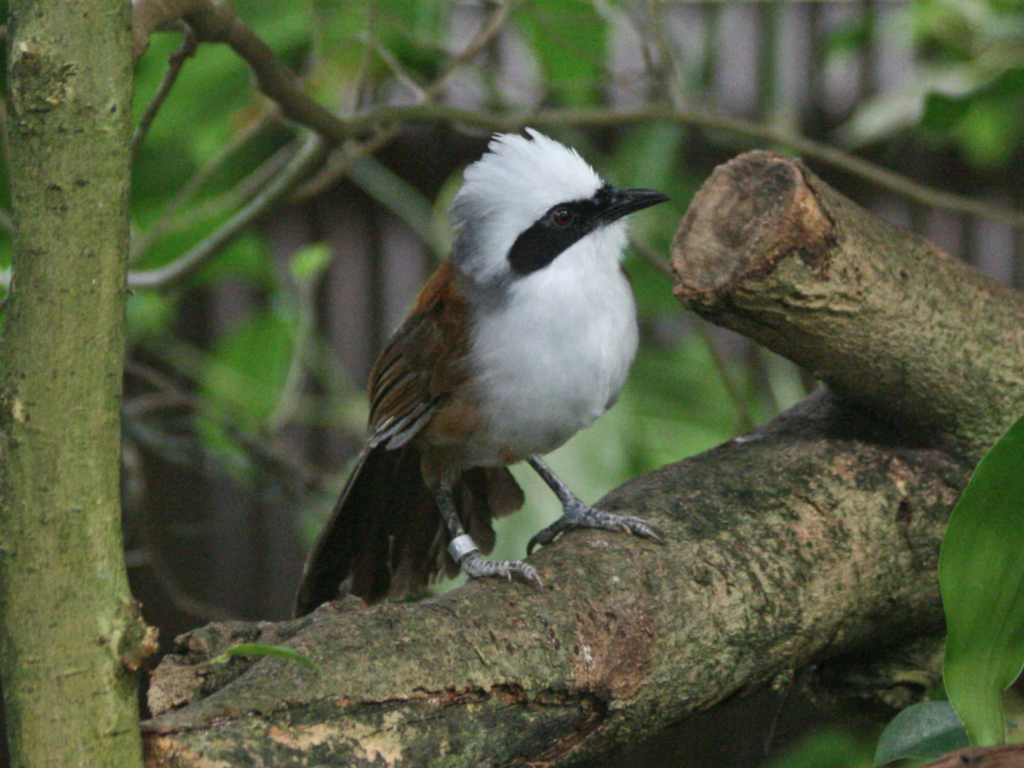
“White-crested Laughingthrush SMTC” by SandyCole (mailto:[email protected]) is licensed under CC BY-SA 3.0.
This species has one of the widest ranges among laughingthrush and is considered to have a minimal risk of extinction. It is native to several countries, including India, Bangladesh, Nepal, Bhutan, Cambodia, Myanmar, Laos, China, Vietnam, and Thailand. Additionally, it has been introduced to Singapore. There are four subspecies of the White-crested laughingthrush, each with slightly different distributions.
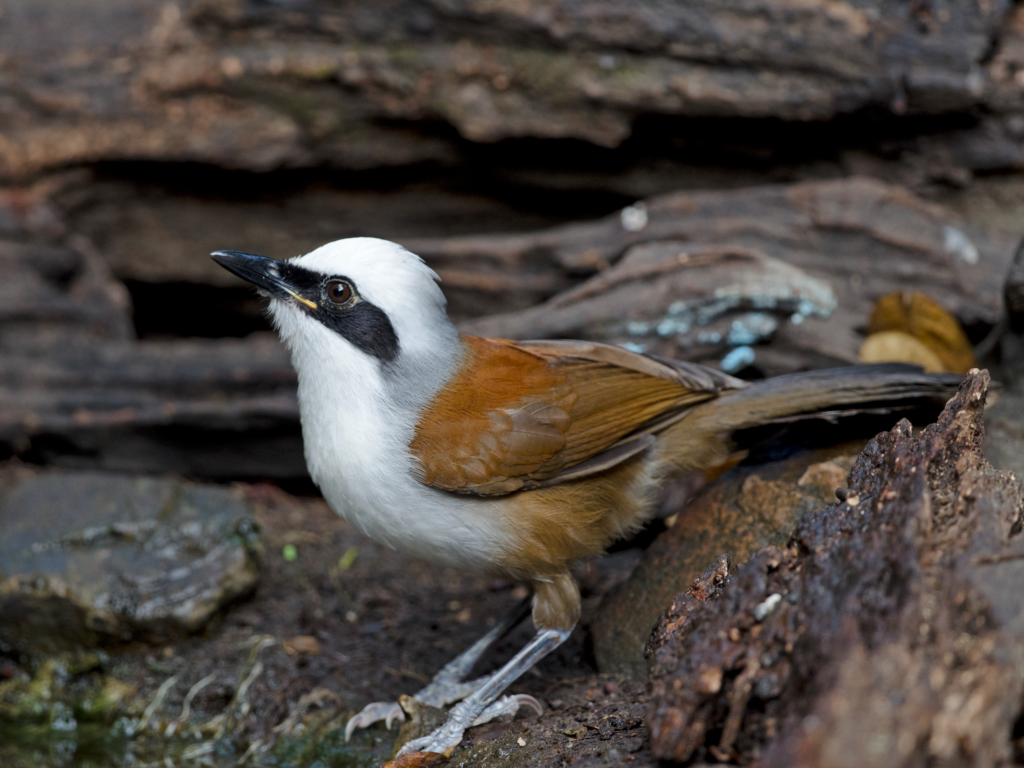
“File:White-Crested Laughingthrush.jpg” by Jason Thompson is licensed under CC BY 2.0.
It can be found in forests and scrublands spanning from the Himalayan foothills to Southeast Asia.
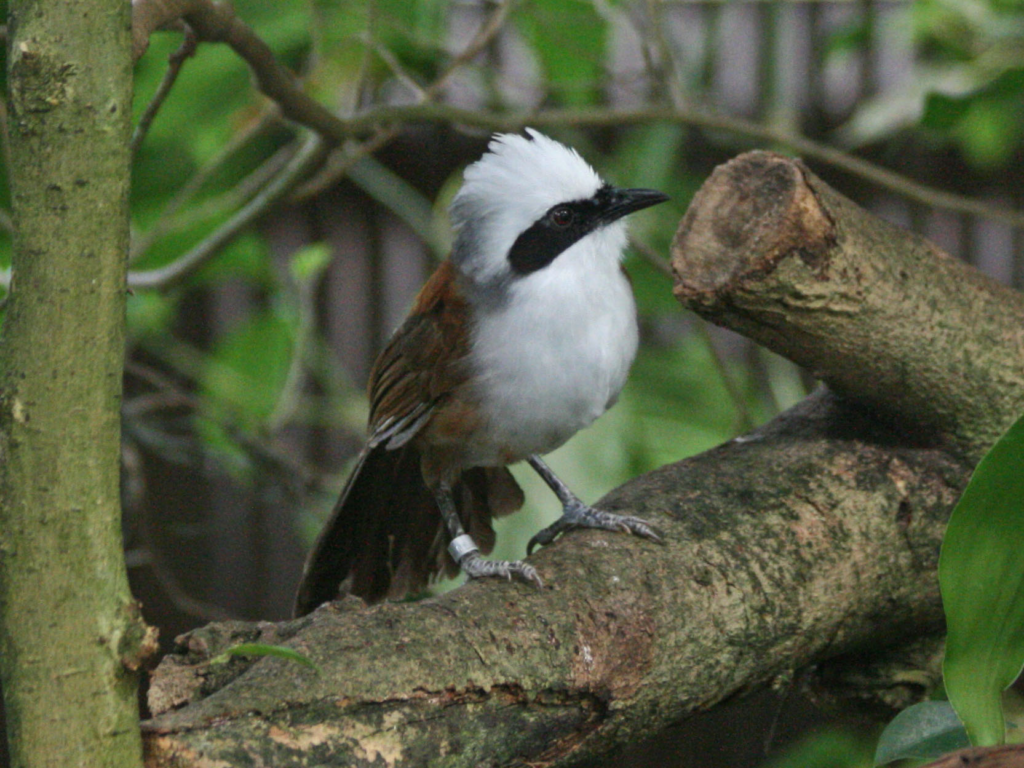
“White-crested Laughingthrush SMTC” by SandyCole (mailto:[email protected]) is licensed under CC BY-SA 3.0.
The White-crested laughingthrush is a terrestrial bird, and it is not a migrant species. It has a diverse repertoire of calls and vocalizations.

“File:Garrulax leucolophus 2zz.jpg” by Photo by David J. Stang is licensed under CC BY-SA 4.0.
Like other laughingthrush, the White-crested laughing thrush is an omnivorous and opportunistic eater. Its diet primarily consists of invertebrates such as beetles, spiders, flies, mealworms, caterpillars, snails, and leeches. However, it also consumes fruits, seeds, nectar, and occasionally small reptiles and amphibians such as snakes, lizards, and frogs. There have been observations of individuals scavenging human food and garbage in Singapore, and some birds have been reported to solicit scraps from humans.

“White-crested Laughingthrush” by Alastair Rae is licensed under CC BY-SA 2.0.
White-crested laughingthrush begin breeding in their second year of life. They engage in multiple breeding cycles between February and September. Their nests are shallow, cup-shaped structures made of bamboo leaves, grass, twigs, and stems, located in shrubs and trees at heights of 2-6 meters. Each nest contains 2-6 pure white eggs, weighing around 6.5 grams each. Both parents participate in incubating the eggs for 13-17 days. They also share brooding and feeding duties as the chicks develop from naked hatchlings to miniature adults over a period of 14-16 days. White-crested laughingthrush exhibit cooperative breeding behavior, with multiple adults, including young from previous clutches, helping with nest-building and feeding.
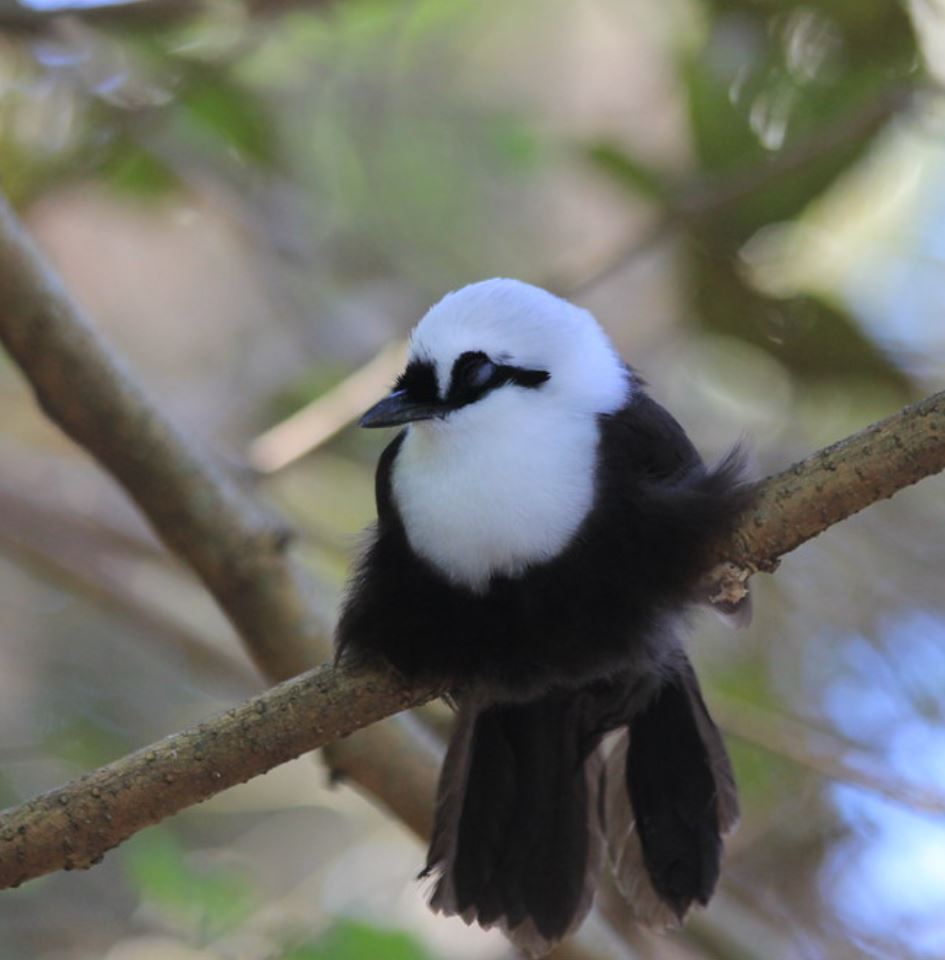
“black white laughingthrush” (cropped) by cuatrok77 is licensed under CC BY-SA 2.0.
The population trend of the White-crested laughingthrush is decreasing. While it is a popular species in the caged bird trade, escaped or voluntarily released individuals have expanded its range to Malaysia and Singapore. Invasive populations have also been reported in the UK and US. In Malaysia, the species is believed to exist in small numbers due to trapping, while in Singapore, it has become well-established and may pose a threat to native birds with similar foraging habits. The White-crested laughingthrush’s adaptability, cooperative behavior, and ability to thrive in various habitats contribute to its success as an invasive species.
